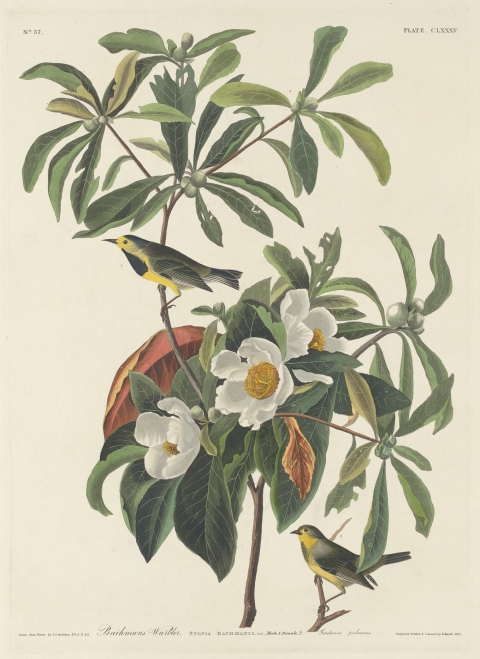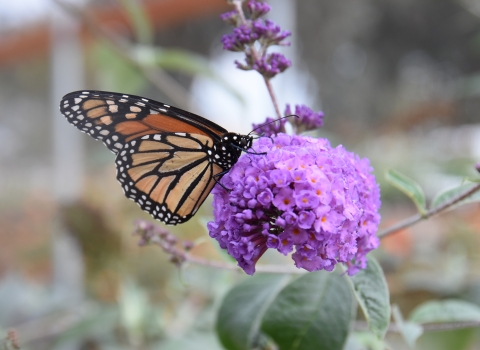FALLS CHURCH, Va. — The U.S. Fish and Wildlife Service is delisting 21 species from the Endangered Species Act due to extinction. Based on rigorous reviews of the best available science for each of these species, the Service determined these species are extinct and should be removed from the list of species protected under the ESA. Most of these species were listed under the ESA in the 1970s and 80s and were in very low numbers or likely already extinct at the time of listing.
“Federal protection came too late to reverse these species’ decline, and it’s a wake-up call on the importance of conserving imperiled species before it’s too late,” said Service Director Martha Williams. “As we commemorate 50 years of the Endangered Species Act this year, we are reminded of the Act’s purpose to be a safety net that stops the journey toward extinction. The ultimate goal is to recover these species, so they no longer need the Act’s protection.”
In September 2021, the Service proposed delisting 23 species from the ESA due to extinction. Following public comment on the proposed rule, the Service is withdrawing the delisting proposal for one species — Phyllostegia glabra var. lanaiensis (a Hawaiian perennial herb in the mint family that has no common name) — due to new surveys identifying new, potentially suitable habitats for the species. Although the delisting proposal included the ivory-billed woodpecker, the Service will continue to analyze and review the information before deciding whether to delist the ivory-billed woodpecker.
The 21 species extinctions highlight the importance of the ESA and efforts to conserve species before declines become irreversible. The circumstances of each also underscore how human activity can drive species decline and extinction by contributing to habitat loss, overuse, and the introduction of invasive species invasive species
An invasive species is any plant or animal that has spread or been introduced into a new area where they are, or could, cause harm to the environment, economy, or human, animal, or plant health. Their unwelcome presence can destroy ecosystems and cost millions of dollars.
Learn more about invasive species and diseases.
Today’s announcement comes as the ESA turns 50 years old in 2023. Throughout the year, the Department of the Interior will celebrate the ESA's importance in preventing imperiled species’ extinction, promoting wildlife recovery, and conserving the habitats they depend on. The ESA has been highly effective and credited with saving 99% of listed species from extinction. Thus far, more than 100 species of plants and animals have been delisted based on recovery or reclassified from endangered to threatened based on improved conservation status, and hundreds more species are stable or improving thanks to the collaborative actions of Tribes, federal agencies, state and local governments, conservation organizations and private citizens.
The final rule to delist 21 species from the ESA due to extinction will publish in the Federal Register on Oct. 17 and is effective 30 days after publication. More information on the final rule is available at http://www.regulations.gov/ by searching under the docket number identified in the table below.
Species being delisted due to extinction:
Species Name | Found | Listed | Last Confirmed Sighting | Docket Number |
MAMMALS | ||||
Little Mariana fruit bat | GU (Guam) | 1984 | 1968 | FWS–R1–ES–2020–0104 |
BIRDS | ||||
FL, SC | 1967 | 1980s | FWS–R4–ES–2020–0110 | |
Bridled white-eye | GU (Guam) | 1984 | 1983 | FWS–R1–ES–2020–0104 |
Kauai akialoa | HI | 1967 | 1960s | FWS–R1–ES–2020–0104 |
Kauai nukupuu | HI | 1970 | 1899 | FWS–R1–ES–2020–0104 |
Kauaʻi ʻōʻō | HI | 1967 | 1987 | FWS–R1–ES–2020–0104 |
Large Kauai thrush | HI | 1970 | 1987 | FWS–R1–ES–2020–0104 |
Maui ākepa | HI | 1970 | 1988 | FWS–R1–ES–2020–0104 |
Maui nukupuʻu | HI | 1970 | 1996 | FWS–R1–ES–2020–0104 |
Molokai creeper | HI | 1970 | 1963 | FWS–R1–ES–2020–0104 |
Po`ouli | HI | 1975 | 2004 | FWS–R1–ES–2020–0104 |
FISH | ||||
San Marcos gambusia | TX | 1980 | 1983 | FWS–R2–ES–2020–0105 |
Scioto madtom | OH | 1975 | 1957 | FWS–R3–ES–2020–0106 |
MUSSELS | ||||
AL, MS | 1987 | 1984 | FWS–R4–ES–2020–0107 | |
AL, GA, TN | 1993 | 1973 | FWS–R4–ES–2020–0107 | |
AL, MS | 1987 | 1986 | FWS–R4–ES–2020–0107 | |
AL, GA, TN | 1993 | mid-1980s | FWS–R4–ES–2020–0107 | |
Green-blossom pearly mussel | TN, VA | 1984 | 1982 | FWS–R4–ES–2020–0108 |
AL, IL, IN, KY, TN, MI, OH, WV | 1976 | 1969 | FWS–R4–ES–2020–0108 | |
AL, AR, TN | 1976 | 1972 | FWS–R4–ES–2020–0108 | |
AL, TN | 1985 | 1966 | FWS–R4–ES–2020–0108 |
-FWS-
The U.S. Fish and Wildlife Service works with others to conserve, protect and enhance fish, wildlife, plants and their habitats for the continuing benefit of the American people. For more information, visit www.fws.gov and connect with us on social media: Facebook, Instagram, \X (formerly known as Twitter), LinkedIn, Flickr and YouTube.




